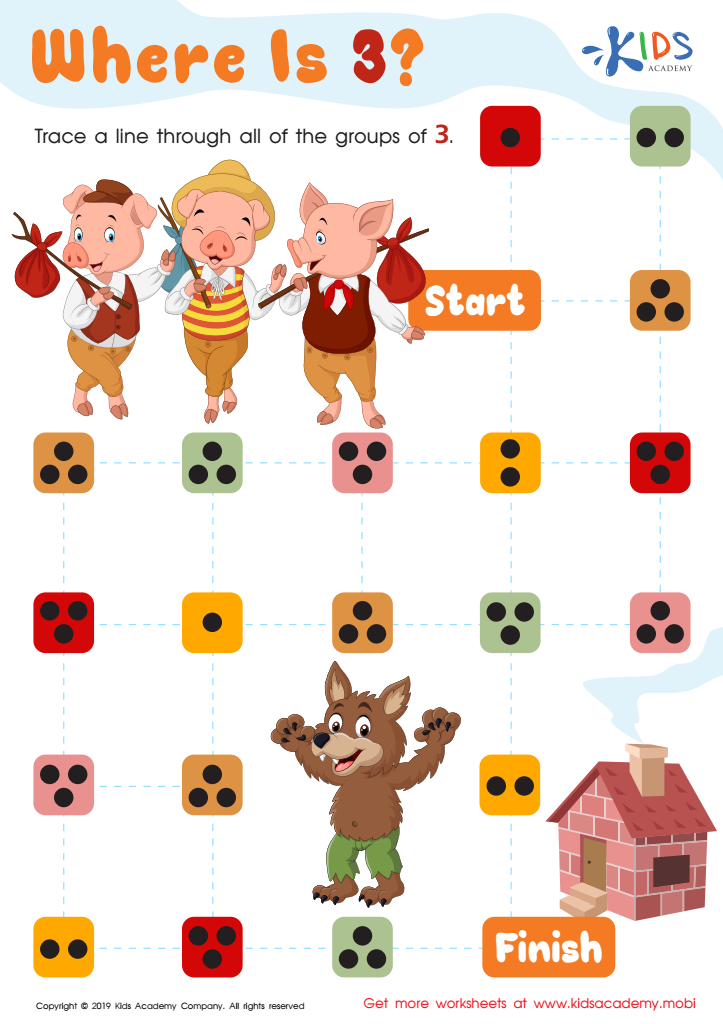Spatial awareness Normal Math Worksheets for 3-Year-Olds
6 filtered results
-
From - To
Discover our engaging Spatial Awareness Normal Math Worksheets designed specifically for 3-year-olds! These interactive worksheets enhance your child's understanding of shapes, sizes, and spatial relationships through fun exercises. As kids complete each activity, they will develop essential math skills while exploring their environment. Perfect for preschoolers, our worksheets encourage critical thinking, problem-solving, and observation. Parents and teachers can easily print these resources for at-home learning or classroom use. Help your little ones build a strong foundation in mathematics with enjoyable, screen-free activities that promote imagination and creativity. Start your child's learning adventure today!


Top or Bottom Worksheet


Ordering Size Worksheet


Where Is 3? Worksheet


Over or Under Worksheet


In Front or Behind Worksheet


Up or Down Worksheet
Parents and teachers should care about spatial awareness in 3-year-olds because it is a foundational skill that supports overall cognitive development and mathematical understanding. Spatial awareness involves recognizing how objects relate to each other in space, including concepts like size, shape, direction, and position. Fostering this skill early on can enhance a child's abilities in various areas, such as problem-solving and critical thinking.
By integrating spatial awareness activities into everyday learning, such as puzzles, building blocks, and pretend play, children develop essential reasoning skills that prepare them for more complex mathematical concepts later on. Research shows that children with strong spatial awareness capabilities tend to excel in math, science, and engineering fields, creating a solid basis for future academic success.
Moreover, spatial awareness aids in fine motor skills and hand-eye coordination, which are crucial for tasks such as writing and drawing. Furthermore, these skills promote creativity and confidence as children explore their environment and express their understanding of the world around them. Overall, nurturing spatial awareness during the early years is vital for holistic development, paving the way for a child to thrive not only in academics but also in life skills.
 Assign to My Students
Assign to My Students







%20(1).jpg)








